Porcini mushrooms: photos, description of species and varieties (birch, pine) and other names of porcini mushrooms
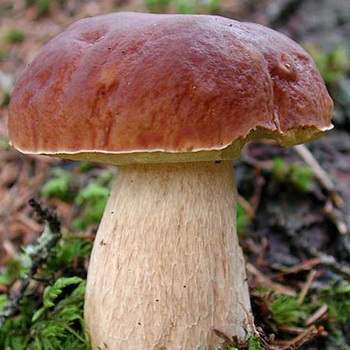 Porcini mushrooms are rightfully considered the masters of the forest - they are very popular, because they have delicious taste and are suitable for all types of culinary processing.
Porcini mushrooms are rightfully considered the masters of the forest - they are very popular, because they have delicious taste and are suitable for all types of culinary processing.
There are not so many types of porcini mushrooms, and all of them are extremely tasty both fresh and dried. In the forests of central Russia, you can most often find a white birch mushroom and a white pine mushroom. As the name suggests, some are found in deciduous forests and others in coniferous forests.
This article brings to your attention photos and descriptions of porcini mushrooms and their varieties, information about twin mushrooms and other interesting facts.
White mushroom and its photo
Category: edible.
White mushroom cap ((Boletus edulis) (diameter 8-30 cm):matte, slightly convex. Has a reddish, brown, yellow, lemon or dark orange color.
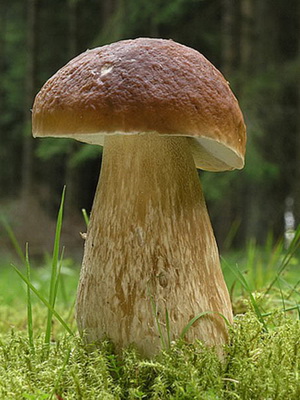
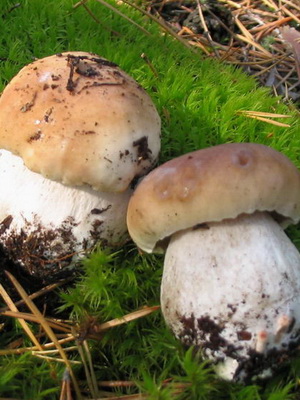
Pay attention to the photo of the porcini mushroom: the edges of its cap are usually lighter than the dark center. The cap is smooth to the touch, often cracks in dry weather, and after rain it becomes shiny and slightly slimy. The skin does not separate from the pulp.
Leg (height 9-26 cm): usually lighter than the cap - light brown, sometimes with a reddish tint. Like almost all boletuses, it tapers upwards, has the shape of a cylinder, a mace, or, less often, a low barrel. Almost all of them are covered with a net of light veins.
Tubular layer: white, in old mushrooms it can be yellowish or olive. Easily detaches from the cap. Small pores are rounded.
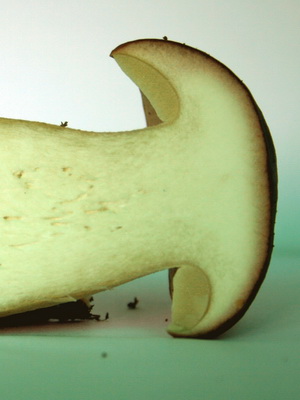
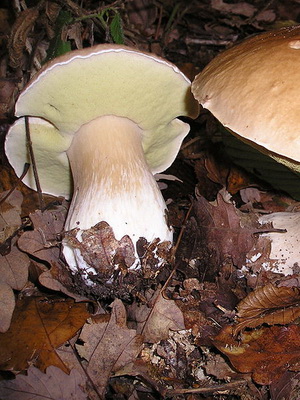
As you can see in the photo of porcini mushrooms, they all have a strong, juicy pulp of a pure white color, which eventually changes to yellowish. The skin may be dark brown or reddish underneath. Has no pronounced odor.
Doubles: edible representatives of the Boletov family and gall fungus (Tylopilus felleus). But the bile has not such dense pulp, and its tubular layer has a pinkish tint (in the porcini mushroom it is white). True, old porcini mushrooms can have the same shade. Another difference is that when pressed, the tubular layer of the bile fungus becomes distinctly reddish or brownish. And most importantly - the taste of the inedible gall mushroom corresponds to the name, while the white one is pleasant.
When it grows: porcini mushrooms grow from mid-July to late September. More common in wooded areas than in plains. It is one of the few mushrooms common in the Arctic zone.
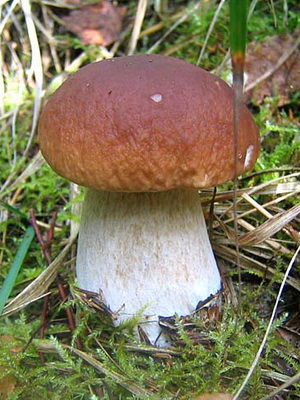
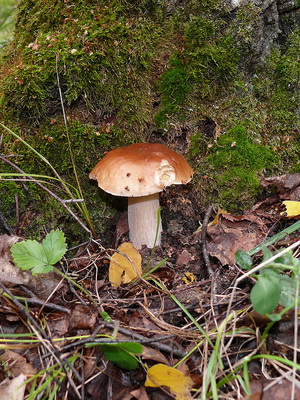
Where can I find: under spruces, oaks and birches. More often in forests, trees in which are more than 50 years old, next to chanterelles, green leaves and green russula. The porcini mushroom does not like waterlogged, marshy and peaty soils.
Eating: has excellent taste.
Over the years, mushroom pickers have found real record-holding mushrooms. For example, a porcini mushroom found in the Moscow region weighed almost 10 kg and had a cap diameter of almost 60 cm. In second place is a porcini mushroom cut near Vladimir. He weighed 6 kg 750 g.
Application in traditional medicine (data not confirmed and not passed clinical trials!): white mushroom contains an antibiotic, albeit in small doses. This mushroom is used for the prevention of tuberculosis and infections of the gastrointestinal tract, the broth raises the immune system and is especially useful after a serious illness, the tincture has long been used to treat frostbite and complex forms of cancer.
Birch porcini mushroom: photos and doubles
Category: edible.
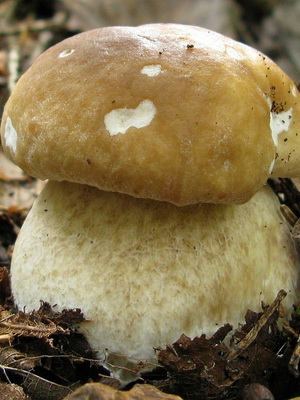
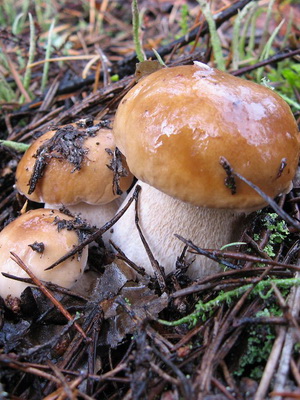
Hat birch porcini mushroom (Boletus betulicolus) (diameter 6-16 cm) shiny, can be almost white, and ocher or yellowish. Bulky, but becomes flatter over time. Smooth to the touch.
Leg (height 6-12.5 cm): white or brownish, has the shape of an elongated barrel, solid.
Tubular layer: the length of the tubes is up to 2 cm, the pores are small and round.
Pulp: white and tasteless.
The twins of the birch porcini mushroom are all edible representatives of the Boletovye family and gall mushroom (Tylopilus felleus), which has nets on the leg, the tubular layer turns pink with age, and the pulp has a bitter taste.
Other names: spikelet (this is how the white birch mushroom is called in the Kuban, since it appears at the time when rye is ripening (spike)).
When it grows: from mid-July to early October in the Murmansk region, the Far East region, Siberia, as well as in Western European countries.
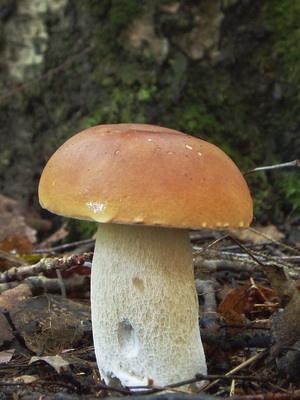
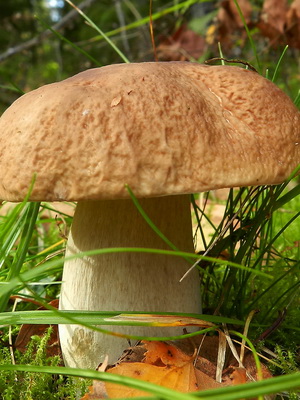
Look at the photo of a birch cep in nature - it grows under or next to birch trees, on forest edges. Mushrooms of the Boletov family are unique in that they can form mycorrhiza (symbiotic fusion) with more than 50 tree species.
Eating: has excellent taste. You can boil, fry, dry, salt.
Application in traditional medicine: does not apply.
Pine porcini mushroom (upland) and its photo
Category: edible.
White pine mushroom (Boletus pinicola) has a cap with a diameter of 7-30 cm, matte, with small tubercles and a network of fine wrinkles. Usually brown, less often with a reddish or purple tint, darker in the center. In young mushrooms, it has the shape of a hemisphere, then becomes almost flat or slightly convex. It is dry to the touch, but becomes slippery and sticky in rainy weather.
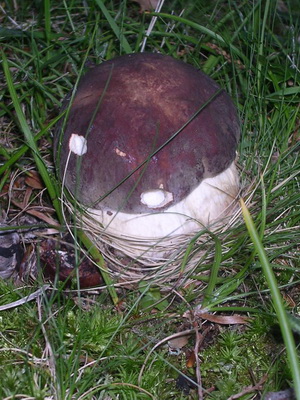
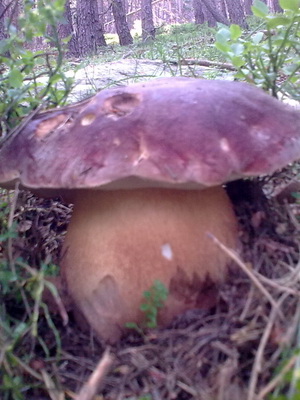
Pay attention to the photo of the legs of the white pine mushroom - its height is 8-17 cm, it has a mesh pattern or small tubercles. The leg is thick and short, widening from top to bottom. Lighter than the cap, often light brown, but it can be of other shades.
Tubular layer: yellowish olive with frequent round pores.
Like the rest of the porcini mushrooms, the photos of which are presented on this page, the pine boletus pulp is dense and fleshy, white on the cut and smells like toasted nuts.
The counterparts of this variety of porcini are all edible members of the Boletovye family and the inedible gall fungus (Tylopilus felleus), the tubular layer of which is pinkish.
When it grows: from late June to early October in the European part of Russia and southern Siberia, as well as in Western Europe and Central America.
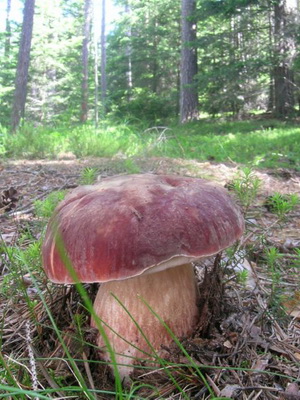
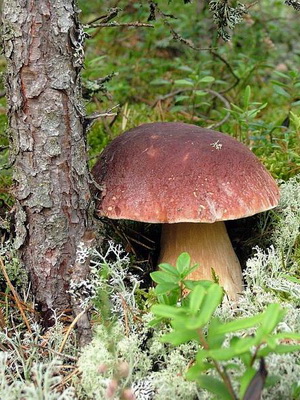
Where can I find: grows singly or in groups next to pines, less often not far from oaks, chestnuts, beeches and firs.
Eating: considered one of the most delicious mushrooms. It is used in any form - dried, boiled (especially in soups), fried or in blanks. It is best to pick young mushrooms, as old ones are almost always wormy.
Application in traditional medicine: does not apply.
Other names for the varieties of porcini mushroom
Boar white mushroom is often called: boletus, ladybug, grandmother, bebik, belevik, striker, capercaillie, good-natured, yellowish, feather-grass, konovyash, konovyatk, korovatik, cowshed, cowshed, cowshed, mullein, mullein, bear-bearer, bear-beetle, pan, podkorovnik, expensive mushroom.
Another name for pine porcini mushroom is pine-loving boletus, upland porcini mushroom.










